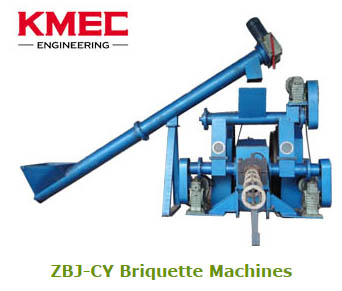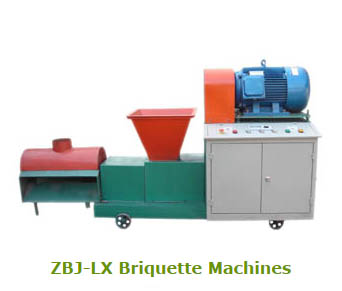Briquetting Challenges Across East Africa-I
Briquetting Challenges across East Africa--I
The promise of bioenergy in East Africa is vast due to the volumes of waste being produced from the agricultural sector, which is only projected to grow in order to meet the needs of increasing populations and the emerging middle class. Bioenergy technologies range from simply burning biomass for heat to compressing it for use in special gasifiers or furnaces that convert it into electricity.
The outlook for briquettes as a commercially viable source of fuel seems positive; however the industry is not without its challenges. The article presents the foremost challenges faced by micro and small scale briquette producers in East Africa because many of these difficulties are similarly pertinent to producers throughout East Africa. Different levels of production present different barriers to growth, although there are some common challenges facing all entrepreneurs operating in rural and peri-urban fuel markets.
Product Quality and Standardization
While the larger scale producers have more controlled production processes, the quality of briquettes among small scale producers varies greatly from one entrepreneur to the next. This is due to the differing methods of production, an absence of standardisation within the industry, a lack of technical knowledge and a want of quality control procedures. Addressing both the production quality (consistency between batches) and the performance quality (how the product compares to others and alternative fuels) is essential if consumers are to gain faith in briquettes as a replacement fuel.The industry already suffers from sub-standard products undermining its potential to tap into available markets. Many claims are made about the benefits of briquettes yet irregularities arising from alternating feedstocks and inconsistent mixing ratios often mean that customer expectations are not met. In some cases briquettes are even being sold at a higher price than regular charcoal and yet are offering a poorer burn. As a result, entrepreneurs have not been able to link their briquettes to the large urban markets in which consumers are more responsive to product quality. The fuel market is a non standardised market, making standardisation of briquettes a challenging process. Locally developed standards for briquettes do not currently exist and in their absence GVEP is working to create informal ‘DEEP’ standards to promote quality and standardisation across the recipients of the DEEP programme with the aim that they can act as a benchmark for quality that others can adopt. The Uganda National Bureau of Standards indicate that they would use the South African Standards as a substitute, as is the case in Kenya, however these may be unsuitable and difficult to achieve when translated into a different context.
A further challenge is that the extra costs incurred in adhering to a national Standard could make the product uncompetitive in smaller local markets in which many small-scale producers sell and where a quality mark has a lesser impact on consumer choice. In order to develop these standards it is important to ascertain the quality and performance of briquettes that the industry is producing. Experience has indicated that users often assess the benefits of briquettes and improved cooking stoves together and it is not always clear which fuel saving is attributed to which technology.
Renewable Energy is Growing on the Trees
Based on a report done last year by GVEP international, there isn’t yet a single briquette producer in the country with the capacity to serve even one industrial consumer’s bioenergy needs. This is creating a significant opportunity for EFK to extend its bioenergy impact beyond croton biofuel. Furthermore, a higher calorific value in our croton-based briquettes provides more energy than typical briquettes made from waste materials like rice and coffee husks.
With our current growth targets, we plan on producing nearly 1 million liters of biofuel and 3,000 tons of briquettes per annum within five years’ time. We’ll achieve this goal by utilizing the annual nut harvests of 500,000 indigenous trees from multiple regions of the country through a collection network that will provide meaningful income to over 30,000 individuals in rural areas. We also plan to purchase the first yields from croton trees planted in our Eco Forestation Kenya orchard—a new financial incentive for reforestation efforts in East Africa.

 Get to know briquette machine, link here
Get to know briquette machine, link here
Access to Technology
Briquettes are a simple product to make by hand and have therefore been the focus of multiple development projects implemented by NGOs over the last decade aimed at providing affordable fuel and small income generation opportunities. Nonetheless, in order for quality briquettes to be produced commercially and at a scale for the industry to significantly impact the fuel market, producers need to have access to appropriate technology. Larger producers have been able to import briquette plants from out of Africa, however the narrow margins in the small-scale trade do not yet justify the cost of doing so. Innovations in locally made briquetting machines have been made in East Africa and the challenge that remains is to make these available to producers across the region. A study11 carried out by GVEP between February and April 2011 identified a lack of adequate briquette plants as the biggest challenge seen by a sample of briquette producers interviewed in East Africa. So in terms of increasing sales and improving the quality of briquettes, the fabrication and widespread adoption of briquette plants is a leverage point. A technical study carried out by GVEP in 2010 concluded that the locally available briquetting press, largely the screw extrusion type, were unable to briquette non-carbonised feedstocks effectively. The consequence of this is an extensive use of charcoal dust as a feedstock and a reluctance to utilise agricultural waste. Effective carbonisation techniques remain largely unknown to many of the smaller businesses, which will need to have access to kiln designs and training in their use if they are to make use of the wider biomass resource.
Production Bottlenecks
It has been seen that there is potential to increase the capacity of many briquette enterprises, where there is a suitable business case to do so, through the purchase of manual and motorised briquetting machines. This can raise production levels up to 1,000 kg per day. Yet evidence has shown that by the time a small-scale entrepreneur is producing briquettes with a motorised briquetting press, their output becomes limited by other stages in the production process. For example the drying of both raw material and finished briquettes is highly dependent on the space available to the entrepreneur. In many cases experienced, the throughput of motorised briquetting presses exceeds the area available to dry and store briquettes, and so many businesses are not operating their briquetting press at full capacity. Accelerated drying methods prove to be uneconomical on a small scale. A second limitation is the rate of carbonisation that can be achieved with current kilns and charring techniques. A single 200-litre drum kiln can produce char at a rate of around 30 kg per day and larger multi-drum kilns can reach a rate of 100 kg per day. This falls short of the 1,000 kg per day required to sustain continuous operation of a motorised briquette press.
While improvements are continuing to be made in
briquette machines, the bottlenecks in (and costs associated with) drying and carbonisation represent a crucial technical challenge that must be overcome.
------------------------------------------------------------------------------------------------------------
Kenya, one of African countries, is a good model for briquette business. Hereunder is a piece of news excerpt from GVEP International Org. Following on from this assessment, GVEP has recruited 25 briquette entrepreneurs to work with in Kenya under the CARE2 programme. GVEP intends to build on the recommendations made in this report through the support offered through the programme.

